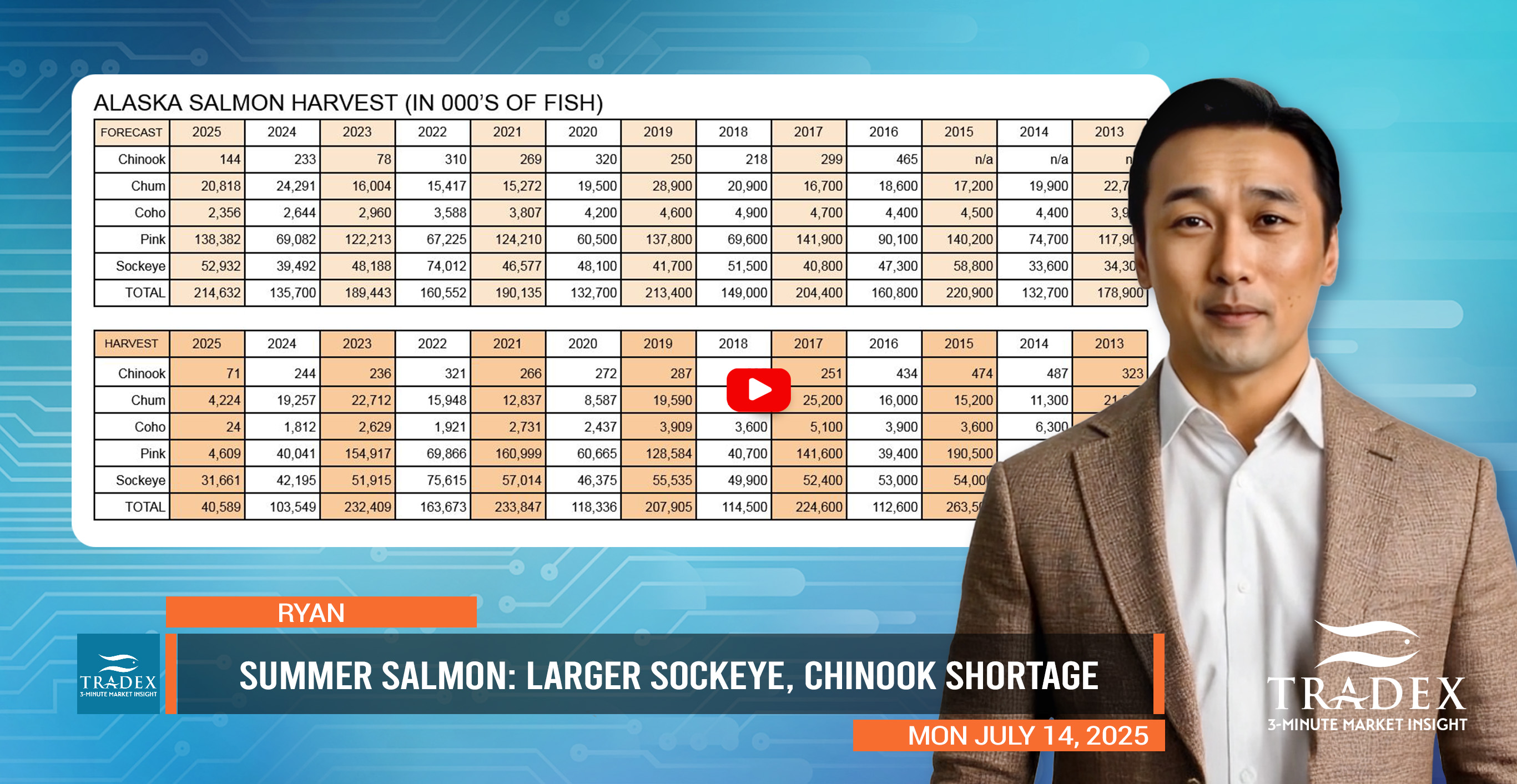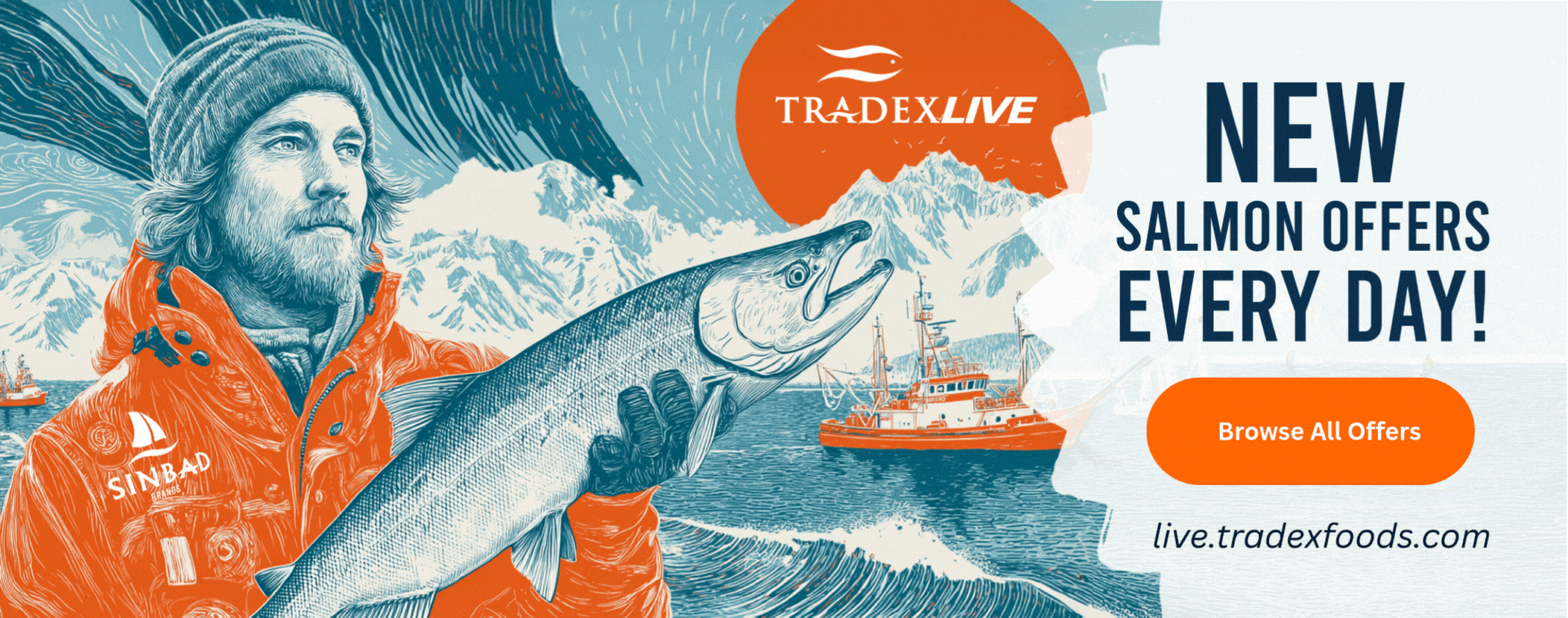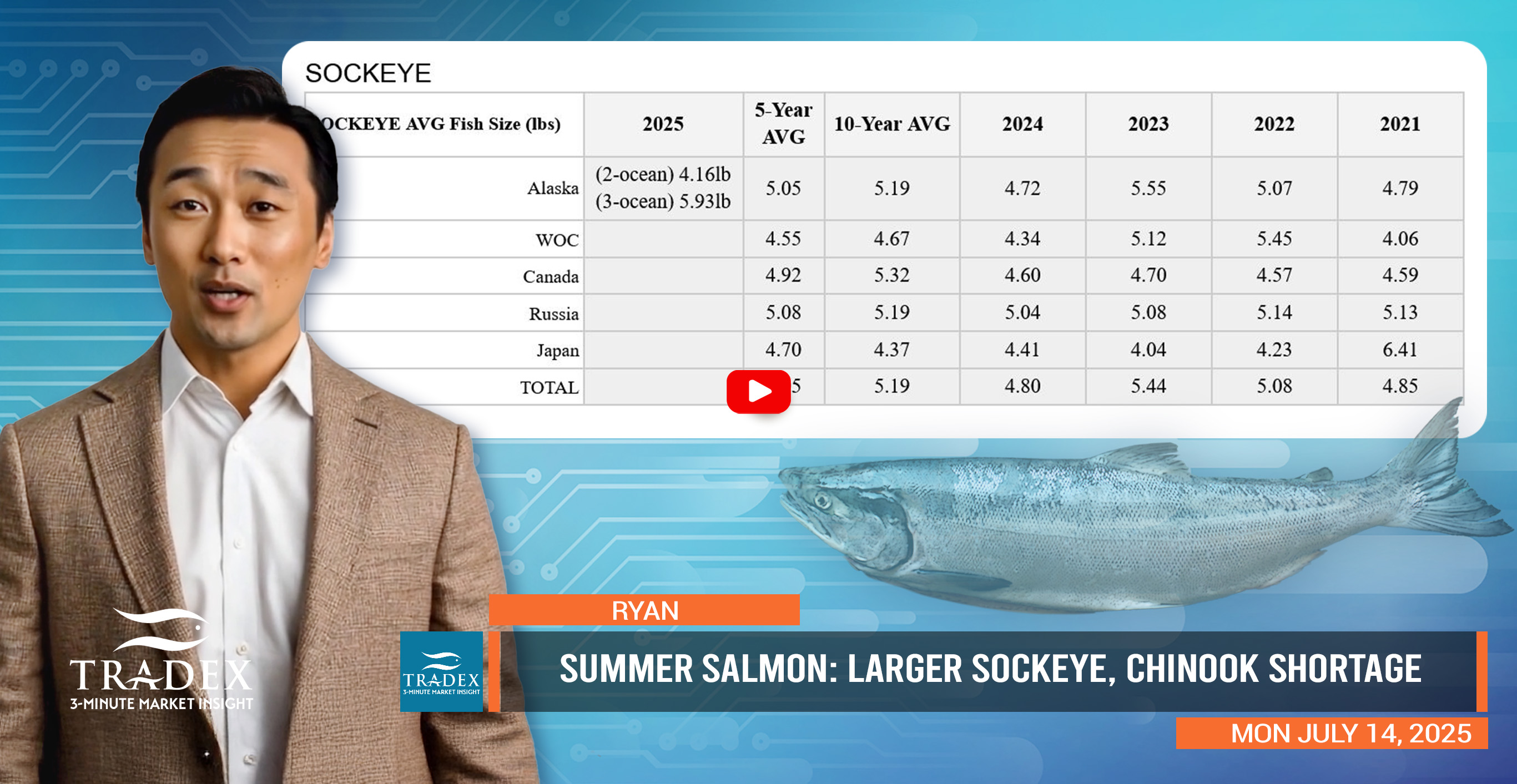
Loading
100%
Sustainability Rating
Click to Learn More
EP 749 | AIRED 07/14/2025
Summer Salmon Update: Stronger & Larger Size Sockeye Harvest, Chinook Tracking Toward Record Low
July 14, 2025 - Here is your mid-July summer salmon update as Alaska’s sockeye and Chinook harvests have each now surpassed 50% of their forecasts. While Chinook harvests are trending towards a record low, sockeye landings look on track to reach a record high, and larger in size than last year.
Incoming data for Bristol Bay sockeye are suggesting that this year’s sockeye on average may be about 1 pound larger than the 4.5 pound record low last year.
In talking to Curry Cunningham, an associate professor at the University of Alaska Fairbanks, he notes that so far in 2025, 2 year ocean sockeye salmon are averaging 4.16 pounds and 3 year ocean sockeye 5.93 pounds, with 2-ocean fish ranking among the smallest in length for their age since 1990 and 3-ocean fish the fifth smallest - resulting in less overlap in size and weight between the two age classes this year. Cunningham predicts that this season, more than half of the returning sockeye will have spent three winters at sea.
On the harvest side, mid-July typically marks the peak week for Alaska’s sockeye harvest, but this week will provide a clearer indication of whether landings are beginning to taper off. At the time of reporting Alaska sockeye harvest are well over 30 million fish (or an estimated 75,000 metric tonnes), equating to over 60% of the preseason forecast. Over in Russia, the latest pulse shows over 4,000 metric tonnes of sockeye harvested (from an estimated 1.74 million fish), equating to over 14% of Russia’s preseason sockeye forecast.

Turning to Chinook, the 2025 season is shaping up to be one of Alaska’s lowest on record. While over 50% of the preseason forecast has been harvested, the forecast was among the lowest on record. Alaska’s totals sit at just over 70,000 fish (or an estimated 380 metric tonnes) - down 70% from last year and the previous odd-numbered year. With closures in key fisheries and the peak typically occurring in mid-July, buyers will likely need to source Chinook south of Alaska. Washington, Oregon, and British Columbia are key alternatives, with WOC averaging 2,500 metric tonnes and Canada 700 annually, compared to Alaska at 1,500 over the past five years. Russia also produces 300 metric tonnes plus annually, however access is limited by sanctions and tariffs.

Advertise Here: advertising@tradexfoods.com
Our recommendation is to prioritize sockeye purchases now, prepare for Chinook shortages from Alaska, and to keep tuned-in to our summer salmon updates to monitor the market.

--- If you’re not already, be sure to subscribe to our 3-Minute Market Insight for seafood updates and insights delivered right to your inbox.


